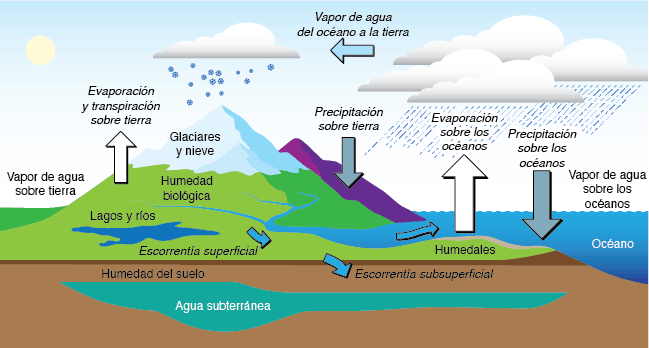Abstract
Water scarcity threatens the development, quality of life, and health of the inhabitants of this world. The phenomenon of climate change has exponentially accelerated the problem of prolonged droughts, shorter periods of rain, or intense rains. The need to capture rain and use it for consumption increases pressure on countries to implement more sustainable and innovative practices. The general objective of this work was to characterize the chemical composition of rainwater collected in the period 2015- 2019 at the UNAM Atmospheric Observatory (Ciudad Universitaria UNAM, Mexico City) and Altzomoni Atmospheric Observatory (Izta-Popo National Park, State of Mexico), belonging to the University Network of Atmospheric Observatories (RUOA) of the Institute of Atmospheric Sciences and Climate Change. The concentration of heavy metals (Al, Cd, Cr, Fe, Mn, Ni, Pb, and V) was determined. The enrichment factor (EF) was calculated using chemical analysis of the metal/Al and ion/Ca ratio as a reference value, obtained from the weighted average concentration. The high EF suggested that in general, metals have an anthropogenic origin linked to land use change and indiscriminate deforestation of forested sites adjacent to the study sites. The Al, Cd, Fe, Pb, and V concentrations were consistent with an important anthropogenic contribution, due to possible transport from Mexico City and the intrinsic contribution of each sampling site. To the above, it must be added that, in mountainous regions, there are considerable variations in the direction of the winds over relatively small distances. The study of the persistence, presence and permanence of heavy metals in the study of rainwater is necessary to promote current and future projects in the treatment and use of rainwater.
References
American Public Health Asociation (APHA)-American Public Health Asociation. (2005). Standard Methods for the Examination of Water and WasteWater. Recuperado de https://www. standardmethods.org.
Baize, D. y Sterckeman, T. (2001). Of the necessity of knowledge of the natural pedo- geochemical background content of soils by trace elements. Science of the Total Environment. 264, 127-139.
Basta, N., Ryan, J., y Chaney, R. (2005). Trace element chemistry in residual-treated soil: key concepts and metal bioavailability. Journal of environmental quality. 1(49-63), 34.
Beard K. V. (1976). Terminal velocity and shape of cloud and precipitation drops aloft. Journal of the Atmospheric Sciences, 33, 851–864.
Castañe P. M., Topalián M. L., Cordero R. y Salibián A. (2003). Influencia de la especiación de los metales pesados en medio acuático como determinante de su toxicidad. Rev. Toxicología. 20, 13-18.
EPA 6010C-2007, Método para el análisis de metales. Norma y/o método de referencia (Ba, Cd, Cr, Pb y Ag).
García, R., Torres, M.C., Padilla, H., Belmont, R., Azpra, E., Arcega- Cabrera, F., y Báez, A. (2006). Measurement of chemical elements in rain from Rancho Viejo, a rural wooded area in the State of México, México. Atmospheric Environment, 40, 6088- 6100.
García, R., Pérez, R., Kotsarenko, A., Álvarez, H., Barrera, H., Carrillo- Chavez, A., Peralta, O., Campos, J., Torres, R., Hernández, G. (2018). Concentrations of Mercury and Other Inorganic Ions in Wet Precipitation Collected from a Mountain Mining Zone and an Urban Area in Central Mexico. Bulletin of environmental contamination and toxicology, 101(2), 145-152.
García-Martínez, R., Carrillo-Chávez, A., Torres-Jardón, R., Ramírez- Guzmán, A., Ramírez-Guzmán, A., López-Carrasco, M. (2020). Chemical composition of rainwater collected from 2006 to 2009 in Mexico City and at a rural site in Morelos State, south central Mexico. Revista Mexicana de Ciencias Geológicas, 37(1), 1-8.
García-Moctezuma, F. (2022). Efemérides metereológicas para entender la dinámica de la atmósfera. Revista de Enseñanza y Comunicación de las Geociencias. 1(1), 27-31
Horn H. G. H. Bonka, E. Gerhards, B. Hieronimus, M. Kalinowski, L. Kranz, and M. Maqua. (1988). Collection efficiency of aerosol particles by raindrops. Journal of Aerosol Science. 19(7), 855- 858.
Instituto del Agua, sitio web consultado el 29 de mayo de 2024: https://institutodelagua.es/hidrologia/o-que-e-ciclo-hidrologicohidrologia/#google_vignette
Flossmann, A.L., y Pruppacher, H.R. (1988). A theorical study of the wet removal of atmospheric pollutants. Part II: The uptake, redistribution, and deposition of (NH4)2SO4 particles by convective cloud using a two-dimensional cloud dynamical model. Journal Atmospheric Science, 45, 1857-1871.
Hutchinson, T.C., y Havas, M. (1978). Effects of acid precipitation of terrestrial ecosystems. New York, Estados Unidos de América: Plenum Press.
Kitagishi, K. Yamame, I. 1981. Heavy metal pollution in solis of Japan. Tokio Japan Scient. Soc. 32, 302-312.
Lohmann, U., Lüönd, F., y Mahrt, F. (2016). An introduction to clouds: from the microscale to climate. Cambridge University Press.
Mason, B. y Moore, C. B. (1982) Principles of Geochemistry. John Wiley and Sons.
Salvador, P. (2005). Caracterización de la Contaminación Atmosférica producidas por Partículas en Suspensión en Madrid (Tesis Doctoral). Universidad Complutense de Madrid, Facultad de Ciencias Físicas, Madrid, España.
Samara, C., Tsitouridou. R., y Balafoutis, C. (1992). Chemical composition of rain in Thessaloniki, Greece, in relation to meteorological conditions. Atmospheric Environmental, 26(3), 359-367.
Schütz, L. y Rahn, K. A. (1982). Trace-element concentrations in erodible soils. Atmospheric Environment (1967), 16 (1), 171- 176.
Pain D. J. (1995). Lead in the environment en D. J. Hoffman, B. A. Rattner, G. A. Burton y J. Cairns (Eds.), Handbook of ecotoxicology (Section II, Chap. 16, pp. 356-391). Lewis Publishers USA.
Perera, W. A. K. y Magana-Arachchi, D. N. (2022). Microbial Diversity in Rainwater with Correspondence to Particulate Matter and Environmental Factors. Journal of Sustainability and Environmental Management. 1(4), 410-418.
Velasco, I., Ochoa, L., y Gutiérrez, C. (2005). Sequía, un problema de perspectiva y gestión. Región y sociedad, 17(34), 35-71.
Wetangula, G., y Wamalwa, H. (2015). Trace Elements in rainfall collected around Menengai area Kenya. Proceedings World Geothermal Congress: Melbourne Australia, 19-25.

This work is licensed under a Creative Commons Attribution-NonCommercial 4.0 International License.
Copyright (c) 2024 Universidad Nacional Autónoma de México

